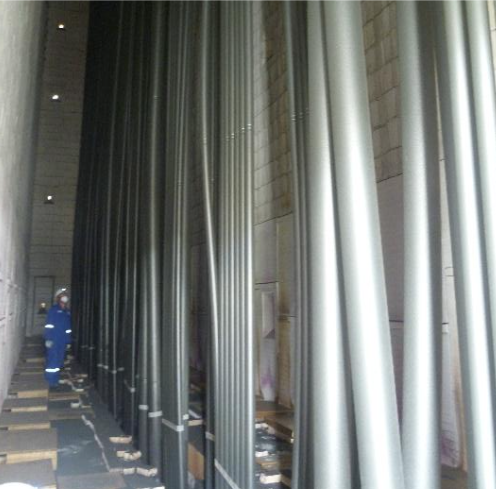Stainless Steel can have Corrosion
Stainless steel can prevent corrosion from the presence of a film layer of chromium oxide But in many cases, stainless steel, especially austenitic stainless steel, has been shown to can be damaged in the form of corrosion known as Intergranular Corrosion.
The microstructure of stainless steel is made up of several grains joined together. By the junction of each grain known as “Grain Boundaries” or grain boundaries, the behavior of Intergranular Corrosion Due to the depletion of chromium content (<12% Cr), the depletion of intergranular chromium in stainless steels is called “sensitization”.
What is “Sensitization”?
“Sensitization” is the precipitation of chromium at the grain boundary, mainly in the form of Cr23C6 carbide.
Chromium carbide precipitation is commonly found in austenitic stainless steel. used in the temperature range of 400°C to 815°C and can be found in the weld area (Fig. 3).
Chromium precipitation results in the depletion of chromium at the grain boundary. As a result, the area has reduced corrosion resistance properties.
Methods of Prevention and Measurement
Control and reduce the risk of birth Intergranular Corrosion is achieved by reducing the number of occurrences. Sensitization There are mainly 3 methods.
- Solution annealing is the annealing of stainless steel at a temperature of 1000 °C to 1150°C depending on the grade of stainless steel. and rapid cooling, which solution annealing is difficult to do on-site.
- Choose material that is L grade (Low Carbon) to reduce the occurrence of sensitizing at the weld.
- Choose the material that is Stabilization Grades, such as grades 321, and 347, with the addition of Ti, and Nb, thereby reducing the formation of chromium carbide.
Quantification method for Sensitization and Monitor Sensitization can be done in two ways:
- Laboratory Testing according to ASTM A262
- DOS (Degree of Sensitization) Testing by Double Loop Electrochemical Potentiokinetic Reactivation method, which can be checked on site
Case Study #1
Pipe material from stainless steel grade 304H in Cracking Furnace equipment used at about 700 °C cracking occurs. which caused the loss of production opportunity of more than 1 million baht per day
From bringing the damaged workpiece to inspect to analyze the cause of the damage found that the workpiece cracked along the grain boundary and a large amount of chromium carbide precipitates along the grain boundary. It can measure more than 14% % Degree of Sensitization which results in weakening of stainless steel tube grain and causing cracking.
Case Study #2
Stainless steel pipe grade 304 cracks occur around the pipe being bent. From the examination and finding the cause of the crack, it was found that The rupture results in intergranular rupture. And from the examination of % Degree of Sensitization, it was found that it was as high as 12%DOS.
This led to the conclusion that the cause of this high %DOS was due to inadequate bending control. Thus causing chromium carbide to precipitate at the grain boundary. As a result, the grain boundary is weakened and results in cracking.




